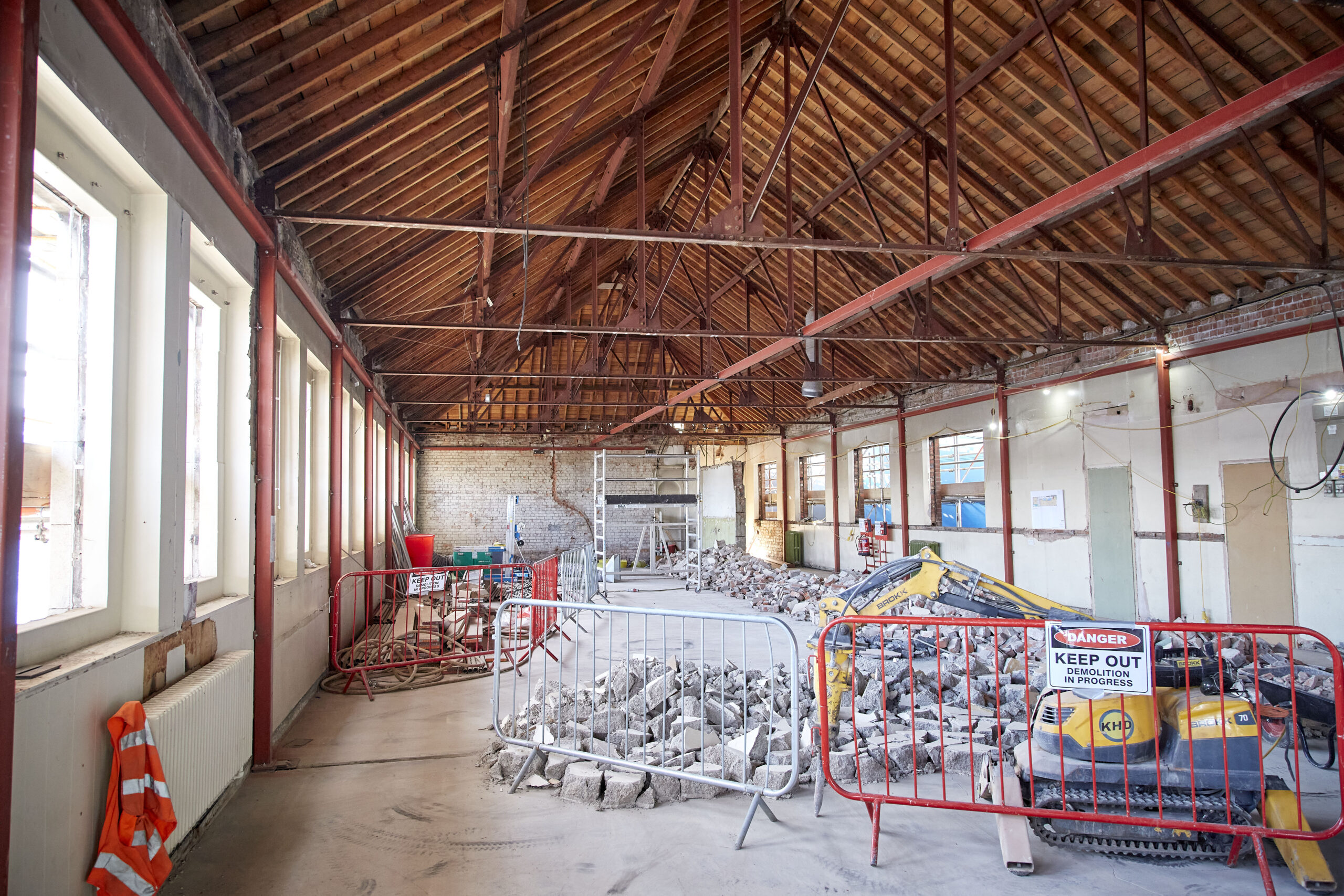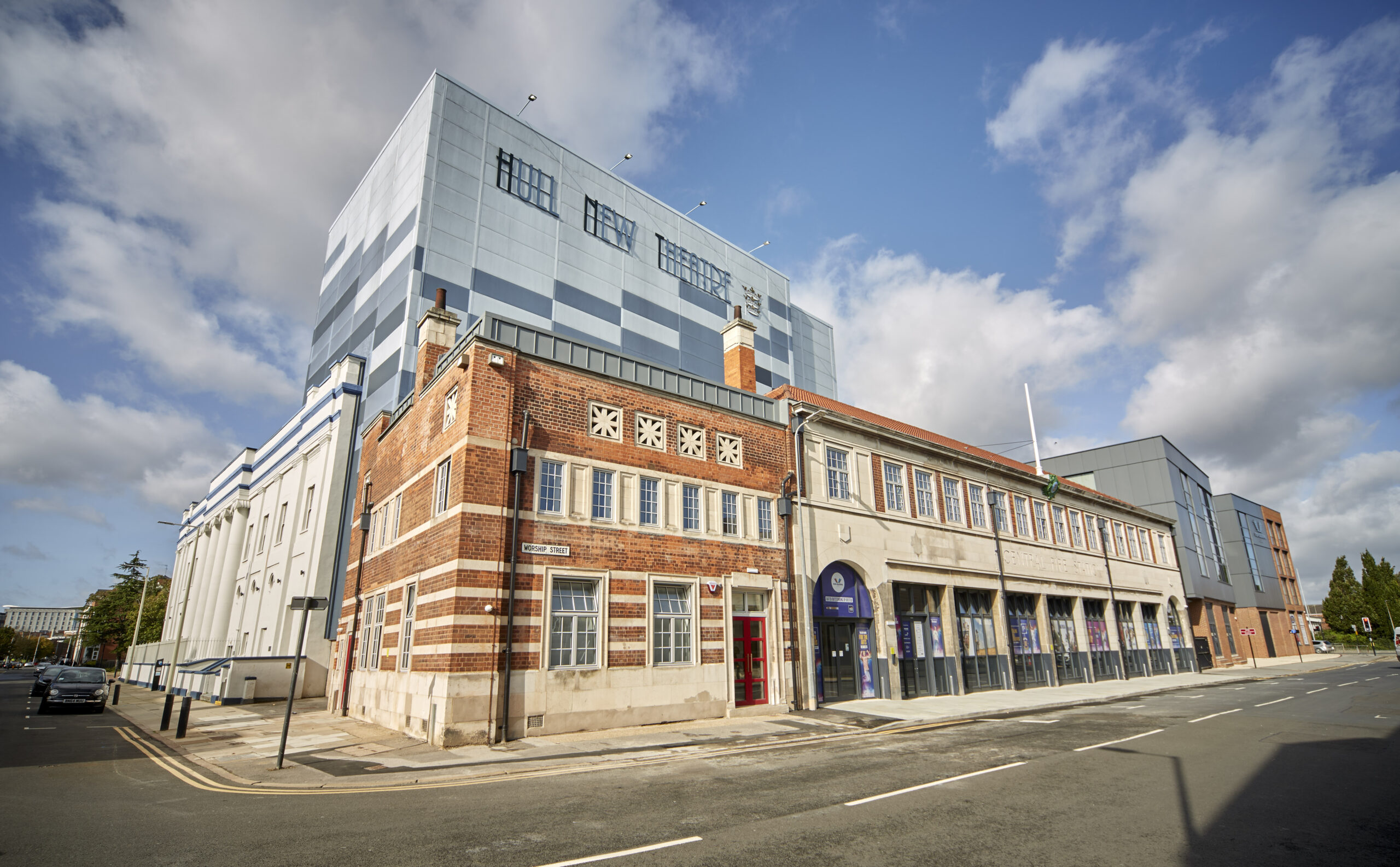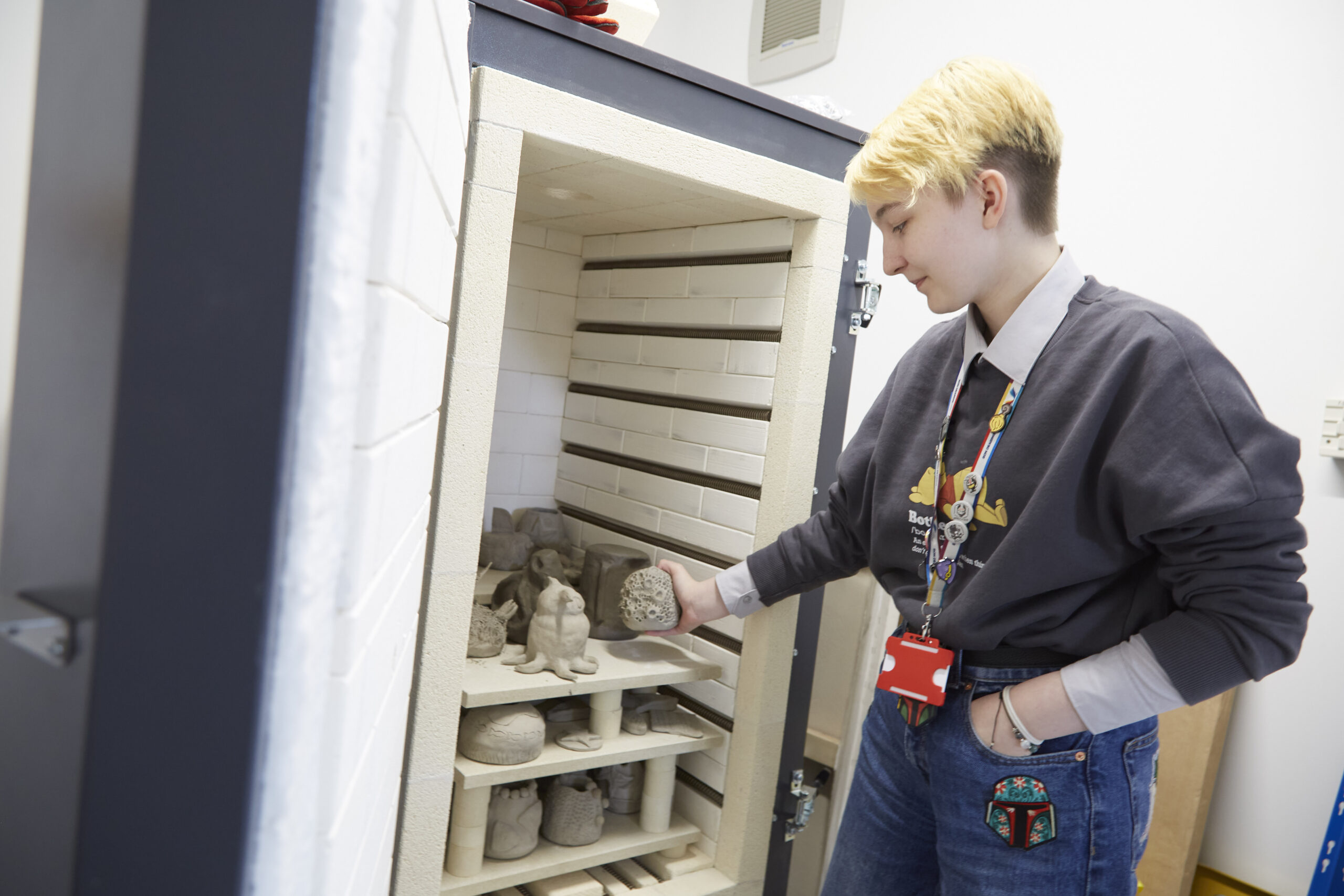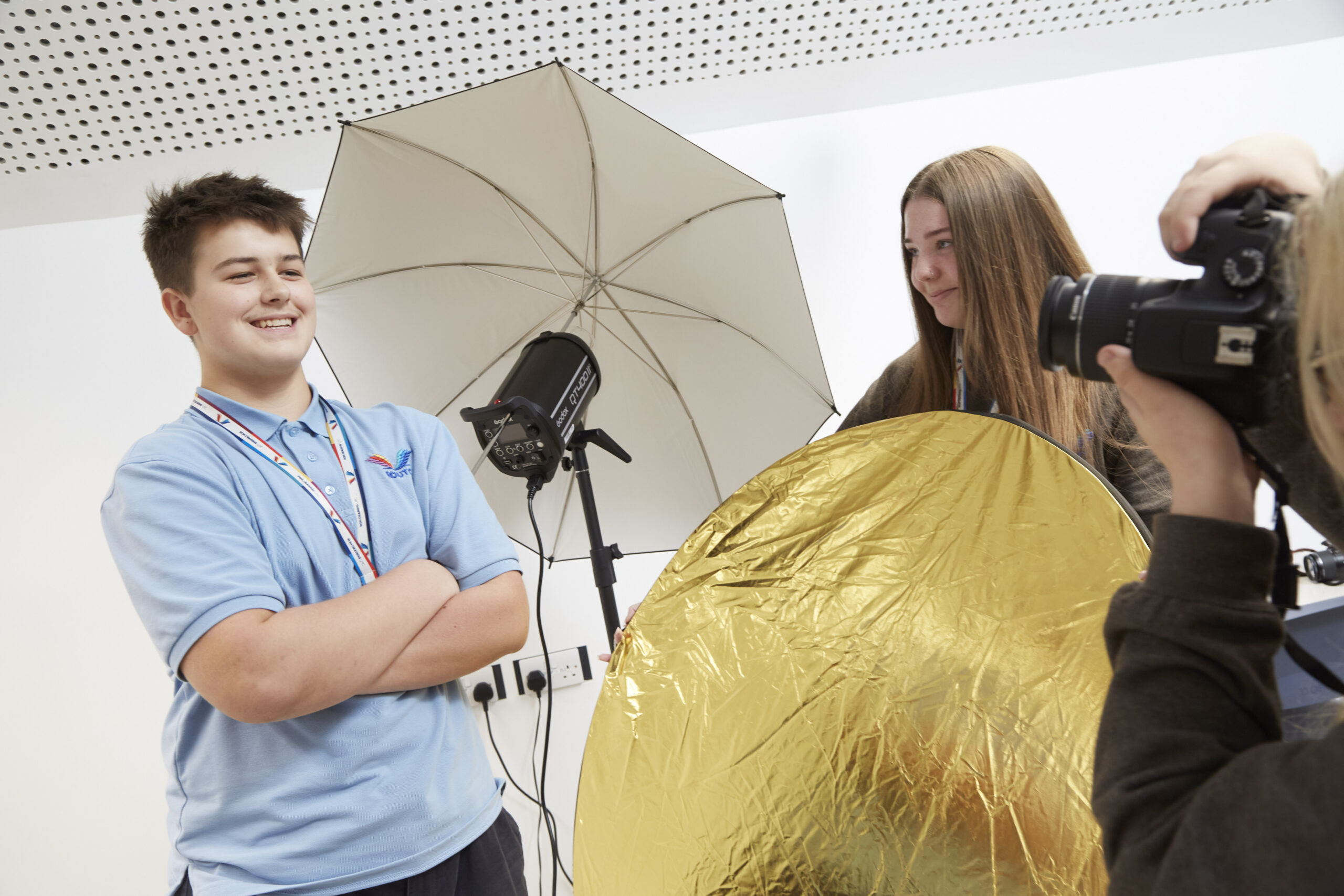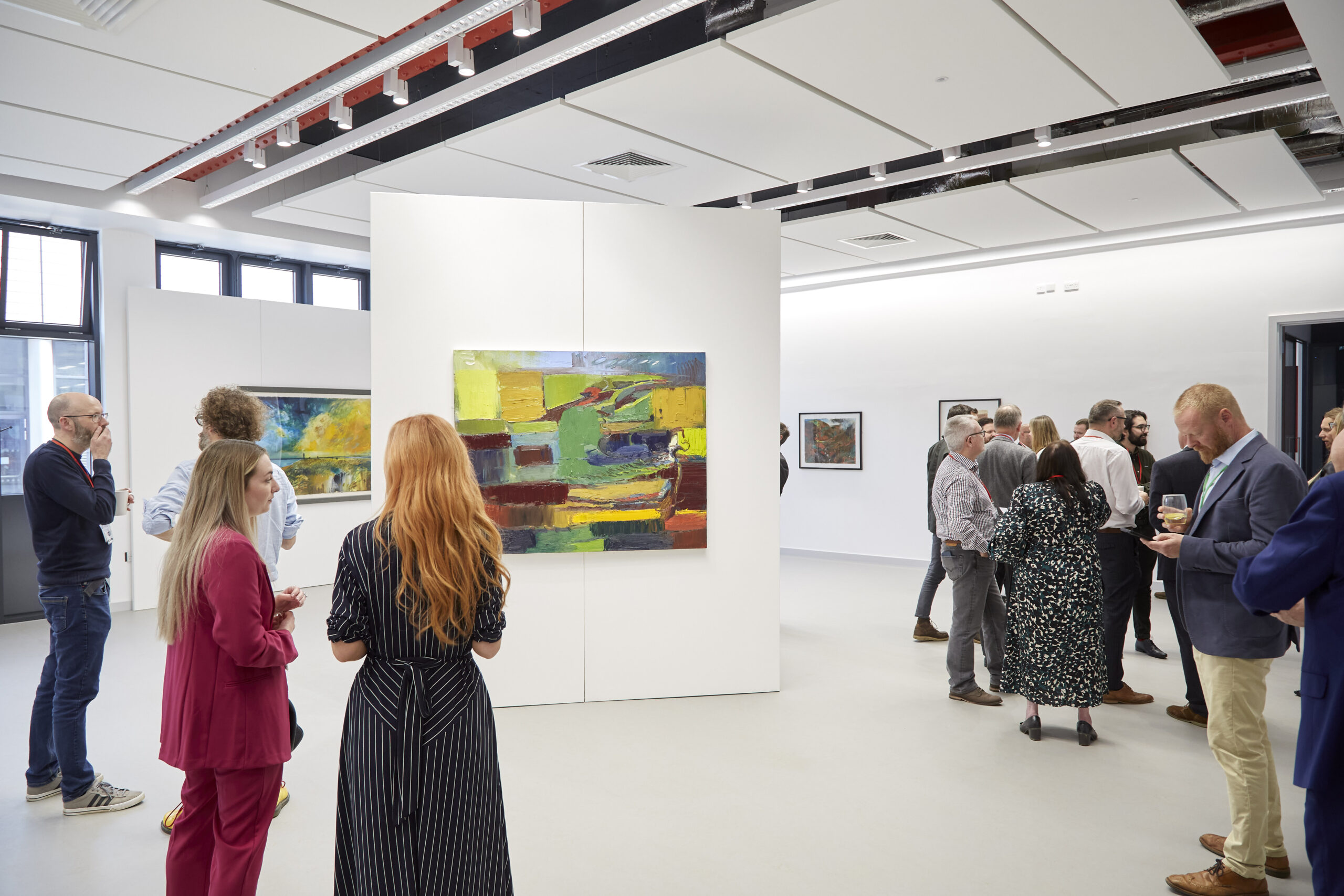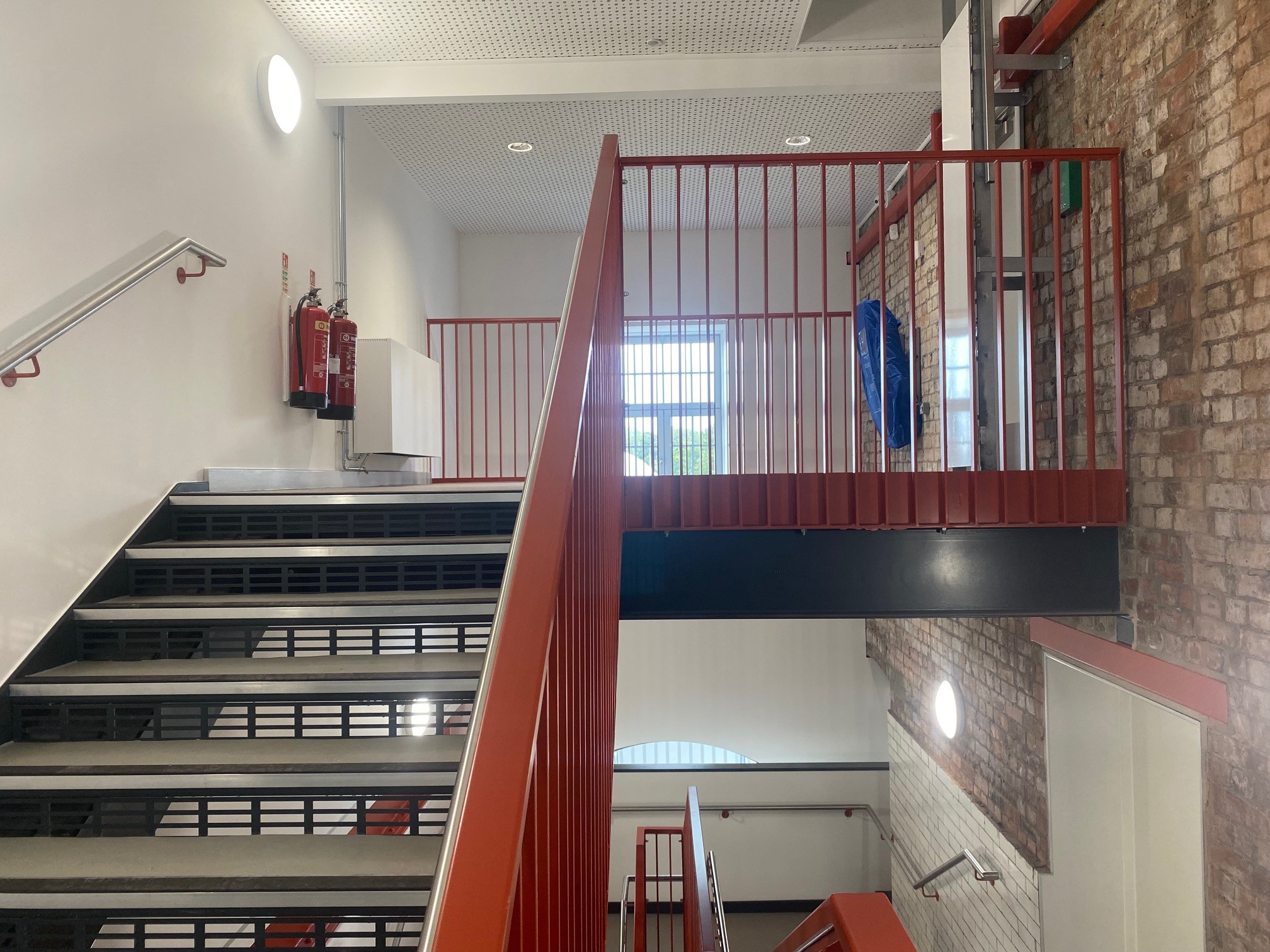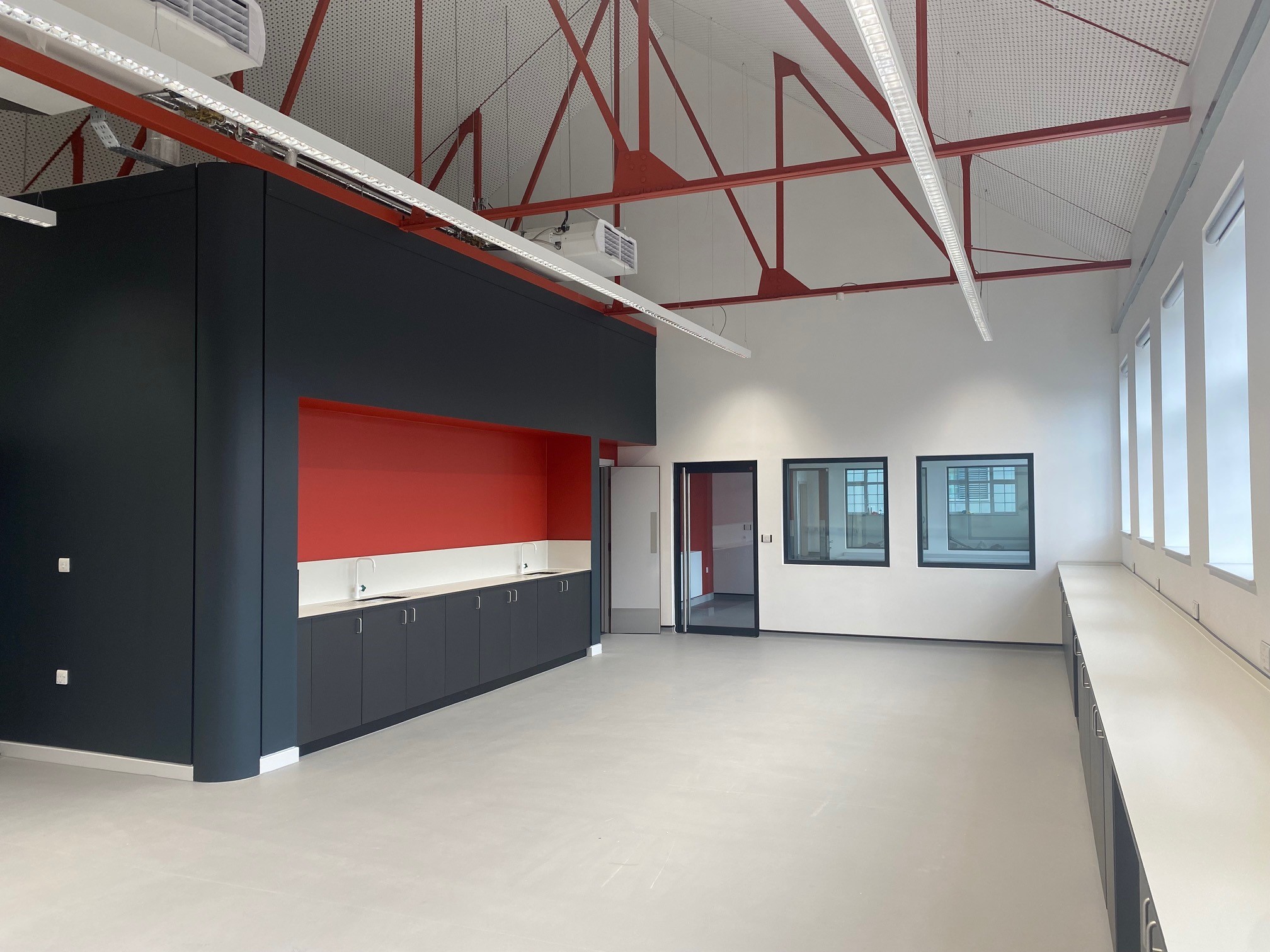This website uses cookies so that we can provide you with the best user experience possible. Cookie information is stored in your browser and performs functions such as recognising you when you return to our website and helping our team to understand which sections of the website you find most interesting and useful.
Creating Ron Dearing UTC STEAM Studios from Hull's former Central Fire Station
Value: £4.5m
Sector: Further Education
Summary: Restoration of Edwardian fire station with beyond compliance energy and carbon interventions
The challenge of making historic buildings fit for 21st century teaching whilst considering all current energy, compliance and economic constraints was brought to the forefront on the redevelopment of the Old Central Fire Station. This was a project carried out by Sewell Group on behalf of the Ron Dearing University Technical College in Hull.
Creating a sustainable building in the long term is about more than quick wins. Following the latest sustainability trends can look like a sustainable solution for the here and now, but what about five years, ten years, twenty years down the road? Updates to a building tend to focus on installing new technology such as heating systems, yet the fabric of a building is normally overlooked. We need to take a whole life approach to buildings, ensuring they’re sustainable for the future, not just in the short term. That’s what Sewell Construction did when it came to STEAM Studios.
The challenge
Hull’s former Central Fire Station had been disused for a number of years. Built in the early Victorian period, with a significant portion rebuilt in the 1920s, it’s in the centre of the city just around the corner from the pioneering Ron Dearing University Technical College, a school built in 2017 which offers employer-led learning. The building was disused, and didn’t meet any modern standards of performance, with large air gaps, solid wall construction and no floor insulation, typical of a building of its age.
Sewell Construction were asked to transform the old fire station into a state-of-the-art, low-carbon, energy-efficient learning space for the college, creating the new STEAM Studios. The aim of the project was not only to create an innovative learning environment where creativity could flourish, but also to ensure the building was as sustainable as possible for the long term, with the focus on carbon performance across the whole life of the building.
Refurbishing an existing building dramatically reduces the amount of embodied carbon when compared with constructing a new building. It enables reuse of an unutilised public asset, and helps create a circular economy, where assets are kept in circulation and never wasted.
The solution
Rather than using the entire budget to put in a short term sustainable solution – for example an expensive air source heat pump – the team weighed up the options and chose to use their budget to improve the fabric of the building, using materials and insulation that would reduce the heat demand for the building, ensure lower temperature operation, and improve the building’s thermal performance. Short term decisions can have unintended consequences, and we wanted to really understand the building and intelligently assess what was right for the building’s long term sustainability and performance. While mechanical assets such as boilers or heat pumps have relatively short lives – a decade or so – improvements to the building’s fabric last a lifetime. And no matter what future technology the building users choose to install – from boilers, to heat pumps, to district heating – they will all be cheaper and more efficient, reducing both costs and carbon overall.
However, taking this route means all stakeholders need to be engaged from the very beginning of the project. The client, architects, designers, constructors and sustainability experts all need to make decisions together about the route to take. Some building owners unwittingly close doors to long term solutions by not engaging the right team at the right time. One of the reasons for the success of the STEAM Studios was that everyone worked together to shape the building, from the start, bringing in all areas of expertise to inform decision making from the briefing stage onwards. Don’t underestimate the impact that designers, constructors and sustainability consultants can have on the performance of your final building.
The team also looked at long term options for heating the building. Heating technology is evolving all the time, and although it seems counter-intuitive, the most sustainable heating system now isn’t necessarily best for the long term. A Hull District Heating Network is currently being considered by Hull City Council, but will not become operational for a number of years, so it was vital to futureproof the building by setting the building up for district heating in future, but with traditional heating methods used until the network is functional.
The result
So what are the takeaways from this project that others can learn from? It’s that you need to take the time to really understand a building and look at lifetime carbon emissions, rather than taking knee-jerk actions which aren’t thought through which may look good at first, but don’t contribute to the building’s enduring performance.
This resulted in:
- Embodied carbon reduced by 45% compared to an equivalent new build
- A full fabric thermal upgrade, taking consideration of Historic England detailing
- Futureproofed heating system to facilitate air source heat pumps
- First-in-area district heat network enabled building
- High performing conservation windows and glazing to meet modern thermal values
- Energy efficient mechanical and electrical systems
- Demonstrates how building performance and sustainability can work together long term
- Disused and partially derelict public building brought back to life, reusing public assets



